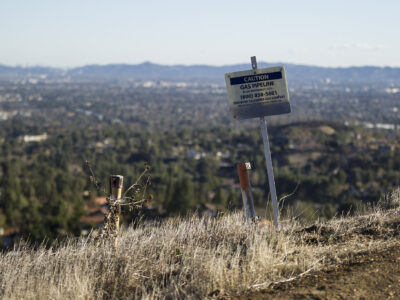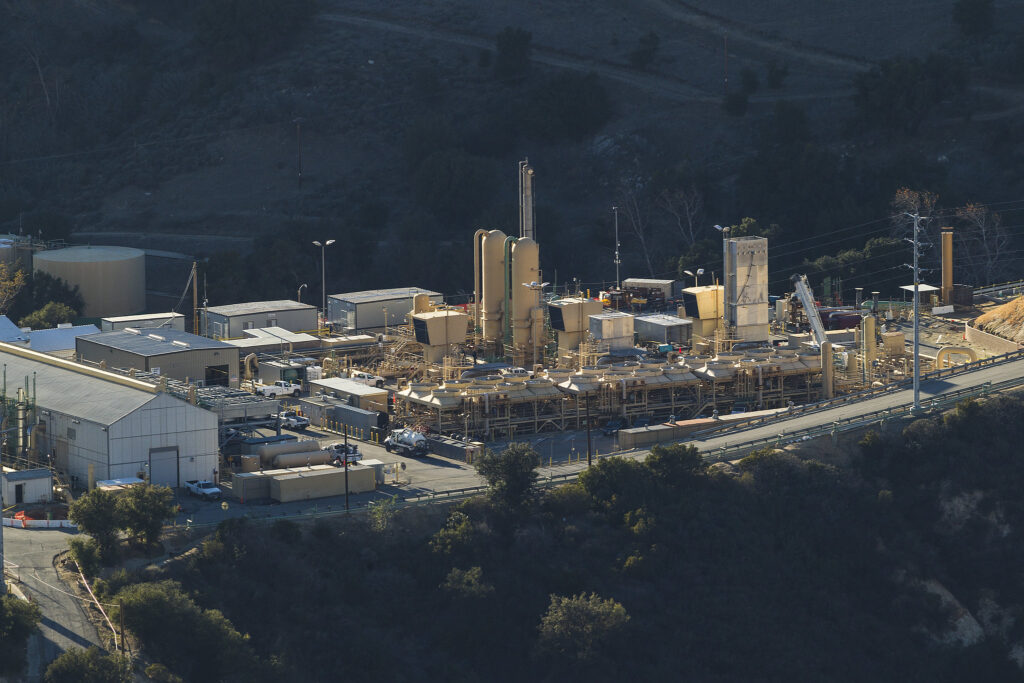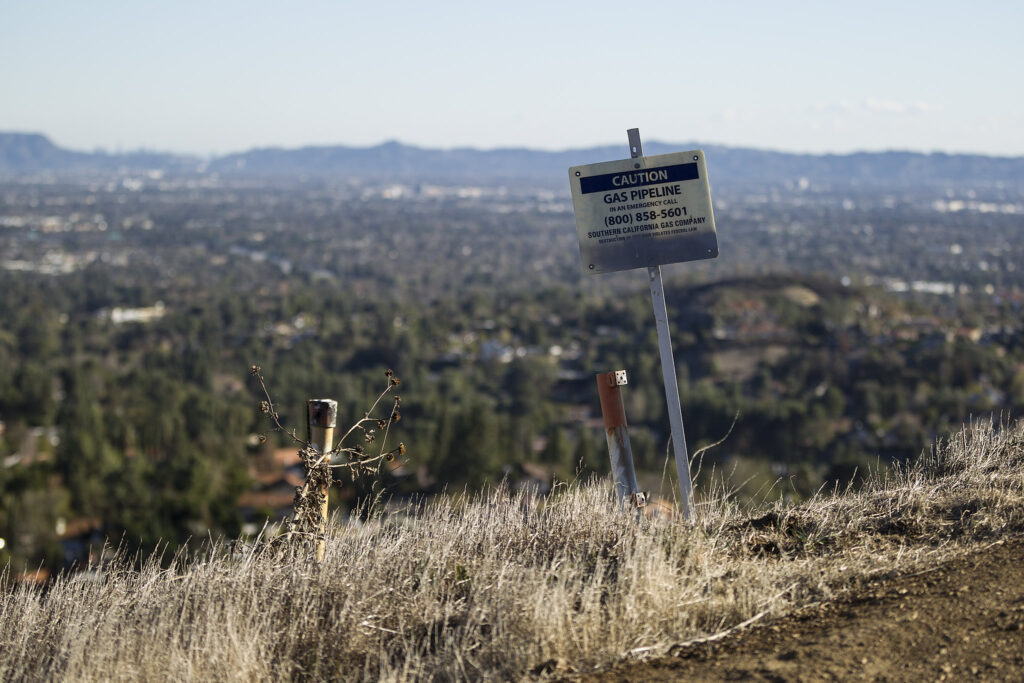CPUC Should Set a Date for Closing Aliso Canyon
Legal Planet: Environmental Law and Policy 2024-11-26


The Aliso Canyon gas storage facility blowout in 2015-16 was the largest methane gas leak in the history of the United States. In addition to the climate effects from the methane leakage — 109,000 metric tons, the equivalent of burning over 1 billion gallons of gasoline — there were tremendous health impacts on neighboring communities and even throughout California. In 2019, Governor Gavin Newsom called on the California Public Utilities Commission (CPUC) to accelerate the closure of Aliso Canyon. However, following high gas prices in the winter of 2022-23, the CPUC permitted Southern California Gas Co. (SoCalGas) to instead expand the amount of gas stored at Aliso Canyon.
Now, the CPUC has issued a proposed decision that (if finalized) will keep Aliso Canyon open until statewide peak gas demand falls below a prescribed level that can be met with other resources. In this form, the proposal misses the mark.
The natural gas stored in Aliso Canyon can be withdrawn during times of high demand, for use by electricity generators and by direct gas consumers. In the proposed decision, the CPUC finds that Aliso Canyon’s gas storage is currently needed to help mitigate price spikes for both electric and gas customers but leaves open the possibility of closing the facility after gas demand declines, in accordance with meeting California’s climate goals. After a demand forecast shows projected peak demand remaining below a specific threshold, a proceeding can be opened to potentially close the facility.
The proposed decision is likely correct that gas demand (for both direct end uses and electricity generation) is such that the state is not prepared to shut Aliso Canyon down immediately, especially in the context of rising concern about energy bills in recent months. There does appear to be evidence that Aliso Canyon can, and has recently, prevented price spikes during times of extreme demand, most notably during days of extreme cold.
However, the proposed decision gives entirely too much credence to SoCalGas’s assertions and modeling regarding future gas use; minimizes and ignores impacts to local communities; and misses an opportunity to set a clear deadline and mandate for closure of the facility.
The proposed decision does speak generally about the goal of transitioning away from reliance on gas toward renewable and electrified alternatives, but it fails to set a clear deadline for Aliso’s closing, instead ruling that the “decision to close Aliso Canyon permanently requires a showing of long-term and consistent natural gas demand reduction so that reliability and just and reasonable rates are not at risk.” Instead, the proposal would require monitoring “progress toward reducing peak day gas demand” and reducing the allowed storage at Aliso through an “incremental process” involving biennial reports from CPUC staff. The proposed decision sets a particular threshold of peak day gas demand (4,121 MMcfd) using the California Gas Report, relying on the CEC’s process for analysis. The decision also leaves open the possibility of even increasing storage limits at Aliso, if an economic analysis finds that price spikes are likely. The proposed decision dismisses arguments from environmental justice and community advocates — as well as Southern California Edison — arguing that Aliso Canyon isn’t needed now (or may not be needed by 2027).
On the whole, the proposal gives too much deference to SoCalGas’s positions and factual assertions on the future state of gas demand. Notably, SCG has actually reversed course on its projections for gas demand between the 2022 and 2024 California Gas Reports, projecting in 2022 that gas demand in SoCal would decrease at an annual rate of 1.5 percent from 2022 to 2035, while more recently projecting an annual decline in gas demand of only 0.7 percent between 2024 and 2040, despite a significant expansion in building decarbonization policies between 2022 and 2024. (Compare 2022 report at 115 with 2024 report at 104). SoCalGas’s gas demand modeling ignores the appliance emissions standards that California air agencies have committed to adopting, which are expected to dramatically reduce gas demand once implemented.
Meanwhile, in comparison, PG&E more reasonably projected a larger decrease in gas demand in its more recent report, reflecting key policies that will impact gas demand, like the California Energy Code and zero-emissions appliance rules (projecting 2.5% annual decline in gas demand from 2022 to 2035 in the 2022 report, at 48, increasing to a 3% annual decline from 2024 to 2040 in the 2024 report). (Compare 2022 report at 48 with 2024 report at 38).
 CC BY-SA 2.0
CC BY-SA 2.0If the CPUC adopts this proposed decision and relies on this type of self-serving modeling from SoCalGas in other proceedings, it will be allowing SoCalGas to bury its head in the sand, ignoring the changes that are on the horizon as our state decarbonizes and electrifies. In this case, the harm will be primarily be borne by the local communities near Aliso who have suffered from ongoing health and safety effects for years. Though there are tremendous local equity harms, there are at least some countervailing systemwide benefits. There is at least reasonable evidence that Aliso may help alleviate price spikes for ratepayers on both the electric and gas side systemwide, and Aliso Canyon has already been built and its capital costs have been incorporated into rates. (Though the CPUC must remain vigilant to ensure there is not market manipulation on fuel prices that could result in windfalls to SoCalGas and other stakeholders.)
However, if the CPUC defers to similarly skewed analysis from SoCalGas in other rate cases or gas planning proceedings, the harm will be much more sweeping. For example, if the CPUC uses the overly optimistic gas usage projections from SoCalGas in deciding whether to approve new pipelines, that could result in overinvestment, which would drive up gas bills for ratepayers throughout the state. In those cases, in addition to the local health and safety harms, as well as the broader climate impacts, there would also be harms to all gas users’ energy bills. And, indeed, SoCalGas does appear to be inflating its gas demand projections in other proceedings as well (see, e.g., stakeholder comments in the pending Sempra rate case).
Overall, while the short-term outcome (temporary continued operation of Aliso) is probably reasonable, it would be preferable if the CPUC set a clearer commitment to closing the facility, ideally by a date certain. Of broader concern is the tremendous deference the proposed decision gives to SoCalGas’s analysis and assumptions about the future of gas use. Stakeholders will need to remain vigilant to ensure that the CPUC does not grant similarly unbridled deference to SoCalGas in other proceedings.